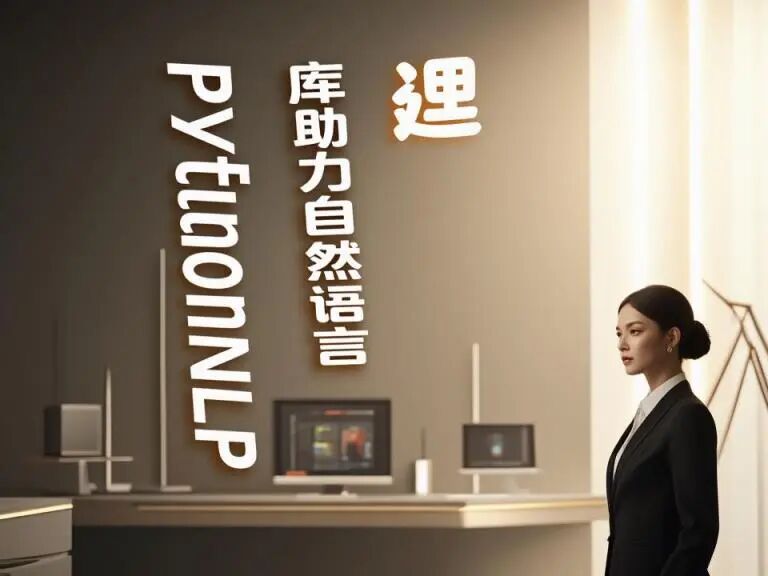Python, as a programming language widely used in various fields such as data science, artificial intelligence, and web programming, not only tests programming skills and logical thinking but also challenges innovative thinking and a deep understanding of language features.
Challenges in Python Problem-Solving Approaches

In practical application scenarios, Python problem-solving approaches face numerous challenges and difficulties. Complex algorithms and data structures require efficient solutions, massive data processing demands optimization of memory usage and execution speed, and diverse requirements necessitate ensuring that the code possesses high scalability and maintainability to adapt to ever-changing business logic and functional needs. For instance, when handling large-scale data sorting, traditional sorting algorithms have high time complexity, making it difficult to meet performance requirements, thus necessitating the search for better algorithms to enhance efficiency. This is just one of many challenges; in actual projects, we encounter various similar tricky problems, urgently needing to master effective problem-solving approaches to tackle these challenges, successfully complete tasks, and achieve expected goals.
Root Causes of Dilemmas in Python Problem-Solving Approaches
Upon deeper exploration of the root causes, we find multiple influencing factors. Programming novices often struggle due to a lack of solid foundational knowledge, making it difficult to flexibly apply language features, leading to dilemmas in problem-solving. Unfamiliarity with complex algorithms and data structures prevents them from selecting optimal solutions to real-world problems. Furthermore, insufficient practical experience is a significant barrier; many individuals lack opportunities to participate in numerous real projects, accumulating experience in dealing with complex situations, and lack understanding of best practices in different scenarios, leaving them feeling lost when faced with new problems. With the rapid development of technology and the continuous emergence of new frameworks and libraries, failing to keep up with learning can easily leave one behind, unable to leverage the latest tools and technologies to optimize problem-solving approaches. These factors intertwine to create significant difficulties in the Python problem-solving process, making many feel overwhelmed when facing various programming challenges.
Practical Methods for Python Problem-Solving Approaches

Mastering foundational knowledge is key. Deeply learning the basics of the Python language, including data types, control flow statements, functions, and modules, and reinforcing application through extensive practice is essential. Only by establishing a solid foundation can one confidently tackle complex problems. For example, mastering operations on data types such as lists, dictionaries, and tuples can lead to more efficient data handling; appropriately using loop and conditional statements can facilitate various logical judgments, thereby solving different types of tasks.
Developing good programming habits is equally important. Writing code according to standards not only aids personal understanding and maintenance but also benefits others in reading and collaboration. Adhering to the PEP8 coding style guide, unifying variable naming, function naming, and code indentation formats enhances code readability. For instance, clearly naming variables can intuitively reflect their purposes, making them immediately understandable; concise and clear function definitions facilitate understanding and reduce the likelihood of errors. Writing test cases is also an indispensable part of the process; validating code correctness through unit tests and functional tests ensures that programs run as expected, promptly identifying and fixing potential vulnerabilities, thus improving code quality and reliability.
Moreover, focusing on practical experience accumulation is crucial. Actively participating in real projects, gradually accumulating experience from simple to complex tasks, and trying different types of task scenarios can enhance problem-solving abilities. After completing each project, one should summarize and reflect, analyzing encountered problems and solutions, learning lessons to continuously improve oneself. Engaging with open-source projects to study excellent code design and architectural patterns, drawing on others’ successful experiences, broadens one’s perspective and thinking. Actively participating in programming competitions, online forums, and other activities to exchange insights with peers helps one stay updated on industry trends and learn new techniques and ideas, stimulating personal innovation.
Continuous learning and keeping up with technological developments are also vital. Staying informed about the latest research outcomes, new technologies, frameworks, and libraries in the Python field, such as understanding new features and usage of machine learning and deep learning libraries, and applying them in practical projects can add powerful functionalities to programs. Keeping an eye on trends in web programming, database management, and security helps timely update knowledge systems to better meet programming needs in different scenarios. Maintaining a passion for learning and curiosity, continuously exploring new knowledge and technologies, ensures one remains at the forefront of the industry and does not fall behind.

Patience, Care, and Continuous Exploration in Python Problem-Solving
There are no shortcuts to solving challenges in Python programming; the key lies in patience, care, and continuous exploration. Only through constant learning and practical summarization can one gradually master effective problem-solving approaches, overcoming numerous difficulties. In this process, we must bravely face challenges, actively seek breakthroughs, and believe that with perseverance, we can become proficient in using Python to solve various complex problems, enjoying the joy of programming and the success it brings. Let us work together, using wisdom and effort to write our own brilliant programming chapters and strive towards higher goals.
Mastering effective Python problem-solving approaches is not an overnight achievement; it requires us to comprehensively enhance our capabilities, from accumulating foundational knowledge to solidifying practical experience, and continuously learning to keep up with technological advancements. Each aspect is indispensable. Only in this way can we navigate the ocean of Python programming with ease, effortlessly tackle various challenges, and achieve a magnificent transformation from novice to expert, creating excellent and efficient programs, adding brilliance to our careers, and contributing to the development of technology in society. Let’s all work hard together!